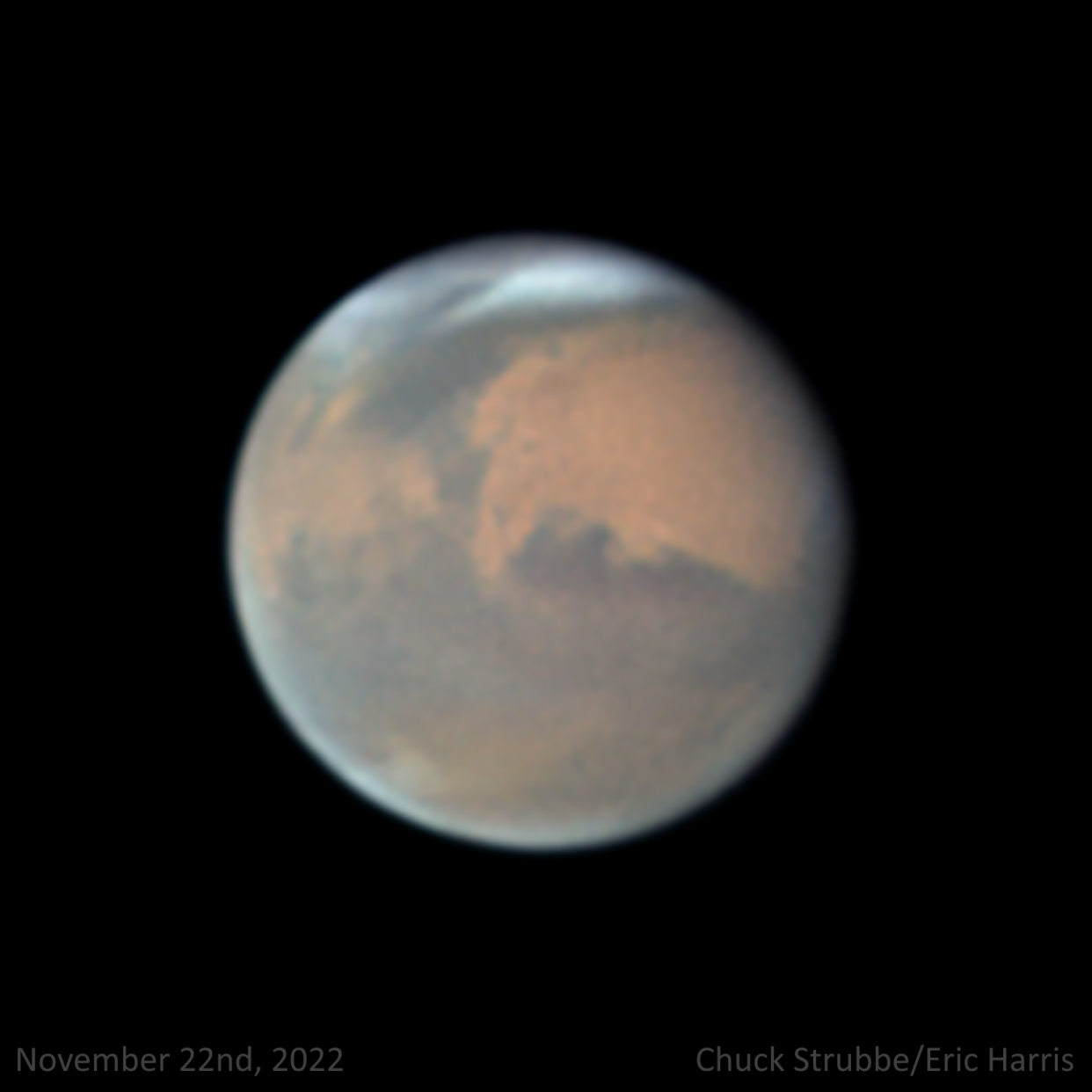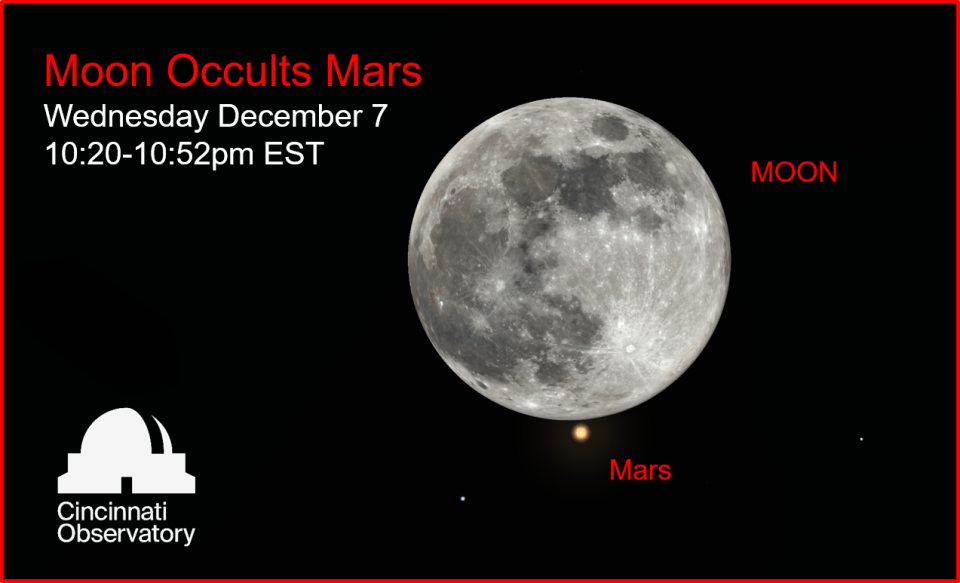For 31 minutes tonight, Mars will disappear behind the moon

As the moon circles the Earth, it can pass in front of bright stars, blocking their light completely. This is called an occultation. But one of the rarest astronomical sights happens when the moon occults a planet like Jupiter or Saturn.
And on the night of Dec. 7, 2022, the Red Planet better watch out because the moon is coming to block Mars out.
When you look toward the moon that night at 10:20, you will see this very bright orange-colored star – which is actually Mars – just below the full moon. One second it will be there, and the next, poof, it will be gone. Mars’ light will be blocked (or occulted) by the much closer moon.
For about 30 minutes, Mars will be behind the moon but will pop back into view as quickly as it was snuffed out.

Mars near its closest point during full Cold Moon
Although they will appear close together, the moon will be more than 200 times closer to Earth than Mars. The moon will be about 245,000 miles away while Mars will be about 51,000,000 miles from us.
Adding to the rarity, the full moon of December, nicknamed the “Cold Moon,” occurs at about the same time. And Mars will be exceptionally bright since it will have reached its closest point to the Earth for the year.
The event will be visible across the country except in the southeastern quarter of the U.S. You don’t need binoculars or telescopes to see it (although they will help).
Lunar occultation of Mars timetable – Dec. 7, 2022 (Eastern Standard Time)
10:15-10:20 p.m.: Mars will look like a reddish bump of light on the bottom left portion of the moon.
10:21 p.m.: Mars begins to go behind the moon, then will disappear in about one second.
10:52 p.m.: Mars emerges from behind the bottom right of the moon.
This doesn’t happen very often. In fact, in 25 years of viewing, I’ve never seen a lunar occultation of Mars.

Dean Regas releases National Geographic book: '1,000 Facts About Space'
Explore out-of-this-world facts about the vast expanse of space, from glowing stars billions of light-years away to supermassive exploding supernovas to rockets thundering into the unknown. This comprehensive book takes you on a mind-blowing tour of our unbelievable universe and is full of fascinating facts on topics such as space exploration, our solar system, our galaxy and beyond.
Each section includes dazzling images of outer space to accompany the facts. Organized by categories, you can learn new facts every day. Such as:
“If you lived on a planet near the Castor system you would have six suns in your sky.”
“The Helix Nebula shows a shockwave from a dying star – it looks like an eyeball staring back at you.”
“If you fell into a black hole, your body would be stretched by the intense gravity in a process called ‘spaghettification’.”
1,000 Facts About Space is available Dec. 6 at Disney Books, Amazon and Barnes & Noble.
Event: Marsapalooza
What: Learn about the Red Planet, Mars. And weather permitting, see Mars, Jupiter and the moon through telescopes.
When: Saturday, Dec. 3, from 7-10 p.m.
Where: Cincinnati Observatory, 3489 Observatory Place, Mount Lookout.
Admission: $15, $10 children.
Dean Regas is the Astronomer for the Cincinnati Observatory, and author of the books "1,000 Facts About Space" and "How to Teach Grown-Ups About Pluto." He can be reached at dean@cincinnatiobservatory.org
This article originally appeared on Cincinnati Enquirer: Mars 'occultation' coming Dec. 7 as planet disappears behind moon

